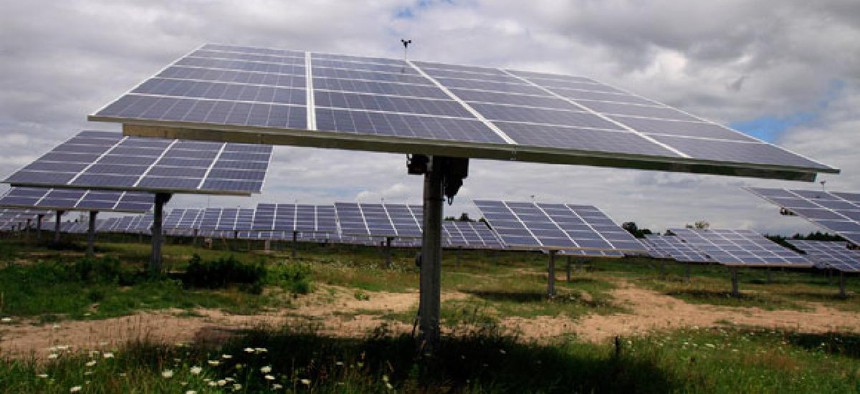Solar Energy's Sunny Future

Vermont's largest solar installation resides in South Burlington. Toby Talbot/AP file photo
The crashing price of silicon may have killed off Solyndra, but the industry has also grown more competitive with other forms of energy.
Over the past several years, the solar industry has been trying to recover from a crash in the price of silicon—a key component in the construction of solar panels.
For most of us, the effects of the price drop were masked by the tinge of scandal: Among the victims of the crash was the infamous Solyndra, which went bankrupt at the cost to the country of hundreds of millions of dollars. Conservatives seized on the company's collapse as a reason for the government to divest itself from renewable-energy projects. Campaigning outside Solyndra's shuttered headquarters in Fremont, Calif., last year, Mitt Romney argued that the company was a symbol of "the president's failure to understand the basic nature of free enterprise in America."
But amid the right-wing outrage over President Obama's investment choices, we lost sight of what Solyndra's collapse really meant: A boon for solar energy in general.
The story begins and ends with China. Sensing vast opportunities in green technology, China began mass-producing solar panels in the last decade in ever greater quantities, flooding the international market. The United States joined Europe in pledging stiff tariffs against Chinese dumping, but not before dozens of Western solar-panel manufacturers went bankrupt. Beijing, because it can do this sort of thing, responded by buying up some of the excess and built lots of solar farms. The country plans to install 10,000 megawatts of solar capacity this year, three times as much as last year.
The intervention seems to be working; prices of solar panels appear to be recovering. And even better, the glut that closed Solyndra has helped drive the overall price of solar energy down to what economists regard as a magic number—about $1 per watt.
In the United States, politicians held up Solyndra as an example of why solar isn't a viable energy solution. But in fact, it may have been just the opposite. What caused the company to go belly-up has also made the solar industry more competitive relative to other forms of energy.
Still, solar panels aren't going to start cropping up on everyone's homes, said Danish statistician and climate skeptic-of-sorts Bjorn Lomborg.*
"The reality is, solar panel costs are only a tiny part of it. You also need installation in individual homes," Lomborg told me. "And the other part of it is, you need to have some sort of backup."
Learning to store solar energy for when it's cloudy has been one of the technology's biggest challenges. Still, the crash of silicon has some analysts predicting that solar energy will actually become a good investment—not just an ambitious one—by as early as 2020, if not sooner in some other countries. Here's a chart of what that might look like (click for an interactive version via Bloomberg).

*In his defense, Lomborg isn't a climate-change denier; he simply believes the world would be better off addressing other problems first.
NEXT STORY: Open Data Could Aid Spending Transparency





